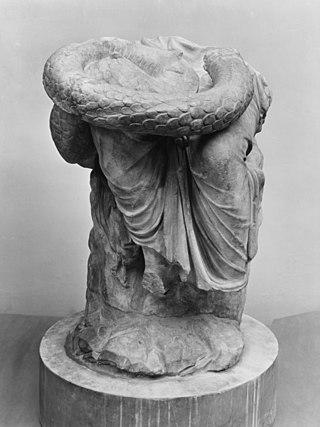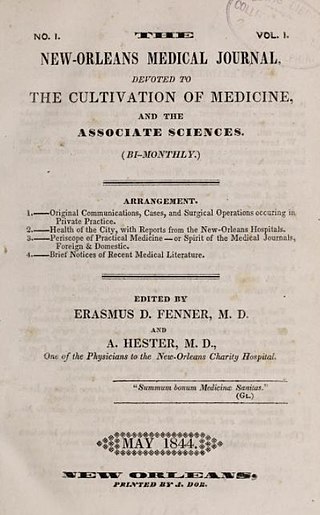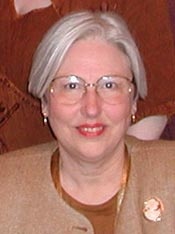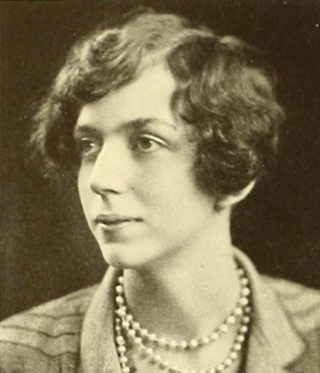Related Research Articles

Bluetongue (BT) disease is a noncontagious, arthropod-borne viral disease affecting ruminants, primarily sheep and other domestic or wild ruminants, including cattle, yaks, goats, buffalo, deer, dromedaries, and antelope. It is caused by Bluetongue virus (BTV), a non-enveloped, double-stranded RNA virus belongs to the genus Orbivirus within the family Reoviridae. The virus is mainly transmitted by biting midges, specifically Culicoides species. BTV has a widespread geographical distribution, encompassing numerous continents and regions, including Africa, Asia, Australia, Europe, North America, and various tropical and subtropical regions. At present, there are more than 28 recognized serotypes of BTV. Bluetongue outbreaks have had a significant economic impact, with estimated global losses reaching approximately 3 billion USD.

Veterinary medicine is the branch of medicine that deals with the prevention, management, diagnosis, and treatment of disease, disorder, and injury in non-human animals. The scope of veterinary medicine is wide, covering all animal species, both domesticated and wild, with a wide range of conditions that can affect different species.

Hygieia is a goddess from Greek mythology. Hygieia is a goddess of health, cleanliness and hygiene. Her name is the source for the word "hygiene". Hygieia developed from a light personification to a full goddess within the cult of Asklepios. Together with her father, she appeared in dreams of patients who visited their temples. Patients performed the healing ritual temple sleep to get healed.

A veterinarian (vet) or veterinary surgeon is a medical professional who practices veterinary medicine. They manage a wide range of health conditions and injuries in non-human animals. Along with this, veterinarians also play a role in animal reproduction, health management, conservation, husbandry and breeding and preventive medicine like nutrition, vaccination and parasitic control as well as biosecurity and zoonotic disease surveillance and prevention.

Medical astrology or astrological medicine is an ancient applied branch of astrology based mostly on melothesia, the association of various parts of the body, diseases, and drugs with the nature of the sun, moon, planets, and the twelve astrological signs. The underlying basis for medical astrology is considered to be a pseudoscience as there is no scientific basis for its core beliefs.
The University of California, Davis, School of Veterinary Medicine is the largest veterinary school in the United States. Established in 1948, the school is the primary health resource for California's animal populations. In 2020, the school was again ranked first in the United States by U.S. News & World Report and in 2022, ranked second in the world by QS World University Rankings. The school is located in the southwest corner of the main campus of the University of California, Davis. The current dean of veterinary medicine is Dr. Mark Stetter.

Carl Clauberg was a German gynecologist who conducted medical experiments on human subjects at Auschwitz concentration camp. He worked with Horst Schumann in X-ray sterilization experiments at Auschwitz concentration camp.

Abbé Gasparo Ferdinando Felice Fontana was an Italian polymath who contributed to experimental studies in physiology, toxicology, and physics. As a physicist he discovered the water gas shift reaction in 1780. He investigated the human eye and has also been credited with discovering the nucleolus of a cell. His work on the venom of vipers was among the earliest experimental toxicological studies. He served as a court physicist for Peter Leopold, Duke of Tuscany and taught at the University of Pisa. He was involved in the establishment of the La Specola museum in Florence.
John Parascandola is an American medical historian. He has written numerous books, including The Development of American Pharmacology: John J. Abel and the Shaping of a Discipline, and held the position of Public Health Service Historian.

Antibiotic use in livestock is the use of antibiotics for any purpose in the husbandry of livestock, which includes treatment when ill (therapeutic), treatment of a group of animals when at least one is diagnosed with clinical infection (metaphylaxis), and preventative treatment (prophylaxis). Antibiotics are an important tool to treat animal as well as human disease, safeguard animal health and welfare, and support food safety. However, used irresponsibly, this may lead to antibiotic resistance which may impact human, animal and environmental health.

Sarah Cleaveland is a veterinary surgeon and Professor of Comparative Epidemiology at the University of Glasgow.
Alison P. Galvani is an American epidemiologist. She is the Burnett and Stender Families Professor of Epidemiology at the Yale School of Public Health and the Director of the Center for Infectious Disease Modeling and Analysis.
Gopal Dhinakar Raj is an Indian veterinary scientist, an academic and the project director of the Translational Research Platform for Veterinary Biologicals, a partnership program between the Department of Biotechnology and the Tamil Nadu Veterinary and Animal Sciences University. Known for the development of diagnostic test kits for animal and poultry diseases such as Leptospirosis and Egg drop syndrome, Raj is a member of the DBT Task Force on Animal Biotechnology. The Department of Biotechnology of the Government of India awarded him the National Bioscience Award for Career Development, one of the highest Indian science awards, for his contributions to biosciences in 2007.

Jane Louise Hurst is the William Prescott Professor of Animal Science at the University of Liverpool. She is Head of Mammalian Behaviour & Evolution. She studies scent communication between mammals, as well as animal welfare and pest control. She served as the president of the Association for the Study of Animal Behaviour from 2010 to 2012.

The New Orleans Medical and Surgical Journal was a bimonthly medical journal published between 1844 and 1952, and the predecessor of the contemporary Journal of the Louisiana State Medical Society. It published Samuel Cartwright's pseudoscientific theories of race and disease, including the first treatment of the conjectural disease drapetomania. The journal was involved in debates on neuroscience and circulation in the 19th century.
Laura Elizabeth Green is a British epidemiologist and academic who is Pro-vice-chancellor and Head of the College of Life and Environmental Sciences at the University of Birmingham. She serves on the council of the Biotechnology and Biological Sciences Research Council (BBSRC).

Victoria Angela Harden is an American medical historian who was the founding director of the Office of NIH History and the Stetten Museum at the National Institutes of Health. Most known for organizing conferences and publishing works on the history of HIV/AIDS, Harden also authored books on the history of the NIH and Rocky Mountain spotted fever. She is a past president of the Society for History in the Federal Government.
Christine Kreuder Johnson is an American epidemiologist and veterinary scientist who is Professor and Director of the EpiCenter for Disease Dynamics at the One Health Institute. She serves as Professor of Epidemiology and Ecosystem Health at the University of California, Davis. She was elected to the National Academy of Medicine and became a Fellow of the American Association for the Advancement of Science in 2021 for her novel research to investigate the epidemiology of zoonotic infectious diseases using One Health approaches, illuminate key animal-human interfaces that facilitate transmission of infectious diseases, and identify synergies for environmental stewardship to protect animal and human health.

David Hayman is a New Zealand-based epizootic epidemiologist and disease ecologist whose general multi-disciplinary work focuses on the maintenance of infectious diseases within their hosts and the process of emergence and transmission to humans specifically related to bats. He has gathered data on the relationship between ecological degradation due to anthropogenic actions, and increased pathogen emergence in humans and animals. During COVID-19 he was involved as an expert in several international collaborations, some convened by the World Health Organization, and was a regular commentator in the New Zealand media about the country's response to the pandemic. He has had lead roles in research organisations at Massey University and Te Pūnaha Matatini and was the recipient of the 2017 Rutherford Discovery Fellowship Award. Since 2014 Hayman has been a professor at Massey University.

Mary DeWitt Pettit was an American physician, medical school professor, and medical researcher. She served as a physician in the United States Navy during World War II. She was a obstetrician and gynecologist on the faculty of the Woman's Medical College of Pennsylvania.
References
- ↑ "Susan D. Jones". cse.umn.edu. Retrieved 2025-01-12.
- ↑ "Susan Jones – Studium Generale Universiteit Utrecht". www.sg.uu.nl (in Dutch). 2015-12-22. Retrieved 2025-01-12.
- ↑ "Animal value, veterinary medicine and the domestic animal economy in the United States, 1890-1930 / Susan Dorothy Jones". Wellcome Collection. Retrieved 2025-01-12.
- ↑ "Dissertations Completed by Students of Charles E. Rosenberg". Journal of the History of Medicine and Allied Sciences. 63 (4): 467–475. 2008. doi:10.1093/jhmas/jrn026. ISSN 0022-5045. JSTOR 24632062. PMID 18755812.
- ↑ "PhD Alum awarded 2017 Guggenheim Fellowship | HSS | Arts & Sciences". hss.sas.upenn.edu. Retrieved 2025-01-12.
- ↑ "Susan D. Jones – John Simon Guggenheim Memorial Foundation…" . Retrieved 2025-01-12.
- ↑ "Two U professors awarded nationally-renowned Guggenheim Fellowships". University of Minnesota. 2017-04-10. Retrieved 2025-01-12.
- ↑ "CSE professor Susan Jones awarded prestigious Guggenheim Fellowship | College | College of Science and Engineering". cse.umn.edu. Retrieved 2025-01-12.
- ↑ "NSF Award Search: Award # 1126923 - Scholar's Award: Plague's Third Pandemic: A History of Disease Ecology". www.nsf.gov. Retrieved 2025-01-12.
- ↑ "Susan Jones | Fulbright Scholar Program". fulbrightscholars.org. Retrieved 2025-01-12.
- ↑ "USS-SWC 2014 – Humans/Animals. A Contested Boundary". summerschool-ivc.univie.ac.at (in German). Retrieved 2025-01-12.
- ↑ "Reporter 9/1/02: Announcement of lectures and seminars". www.admin.cam.ac.uk. Retrieved 2025-01-12.
- ↑ Yee, Karen. "Research Guides: Center for the History of Microbiology/ASM Archives (CHOMA): Lectures, Symposia, Workshops…". lib.guides.umbc.edu. Retrieved 2025-01-12.